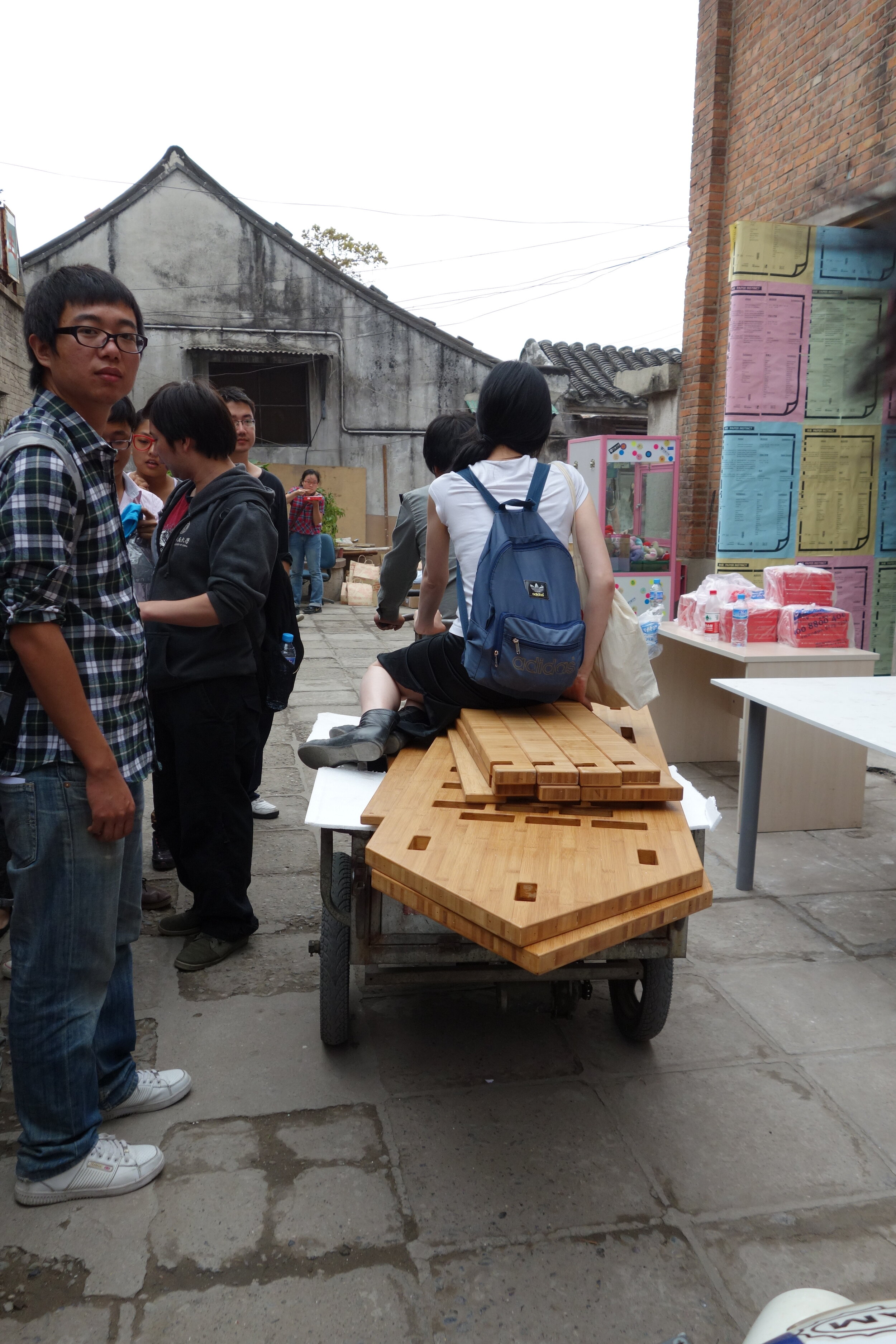Inside out
Commissioned by: Dashila(b)
Event: Beijing Design Week
Beijing, China
As part of their Beijing Design Week program, Dashila(b) has invited us to observe and reflect on the very dynamic processes which the Dashilar area is currently going through.
The parties involved in the renovation of this historical and lively area have set an objective to demonstrate how innovation and creativity could be used to uplift Dashilar to a state comparable with its past glory while preserving its unique character.
Our personal impressions, after visiting Dashilar several times, were of a strong, yet rather harmonious mixture – between old and new, traditional and contemporary, private and public, East and West, the busy and harsh daily life and finding the way to calm-down and enjoy oneself.
Although a large part of Dashilar is considered to be rather poor, we have felt much richness through the warmness and openness of many of the areas’ inhabitants and the strong presence of creativity integrated into the everyday life; wandering the hutongs of Dashilar, one will find himself surrounded by endless examples of clever and original solutions.
Re-using and re-purposing of everyday objects are very common. Many elements found in the hutongs are used in multiple ways, according to the specific needs at a given moment, enhancing the efficiency and possibilities within the physical limitations of space and resources.
Within the project, we were asked to present a suggestion for a piece of street-furniture, inspired by our experiences and thoughts of Dashilar, which could be placed in the renovated hutongs. With the kind help of Dasso we were able to employ bamboo plate-material to create two 1:1 sketch models of one of our ideas; using the warmth of the bamboo and the ‘bricks’ pattern, referring to the materials which were commonly used in the area, we have presented a concept for a piece which can be used in different ways and integrated in the environment through the combination with other elements. The concept also addresses the relations and possibilities of a little privacy within the public area.
In our presentation at the Dashilar Factory we have shown one of the pieces in an installation demonstrating possible use, along many inspirational images. The second piece was placed in one of the newly renovated hutongs and was immediately well perceived by the locals, as well as by the visitors of the area.
We hope that our thoughts and the visual documentation of our experiences could contribute to the awareness of the many wonderful and positive aspects of Dashilar and help to inspire the continuous use of creativity for the areas’ future development, as it affected us.
With special thanks to:
Neill Gaddes, Yijing Xu, Dashila(b), Yinan Wang and the people of Dashilar
———
process

























